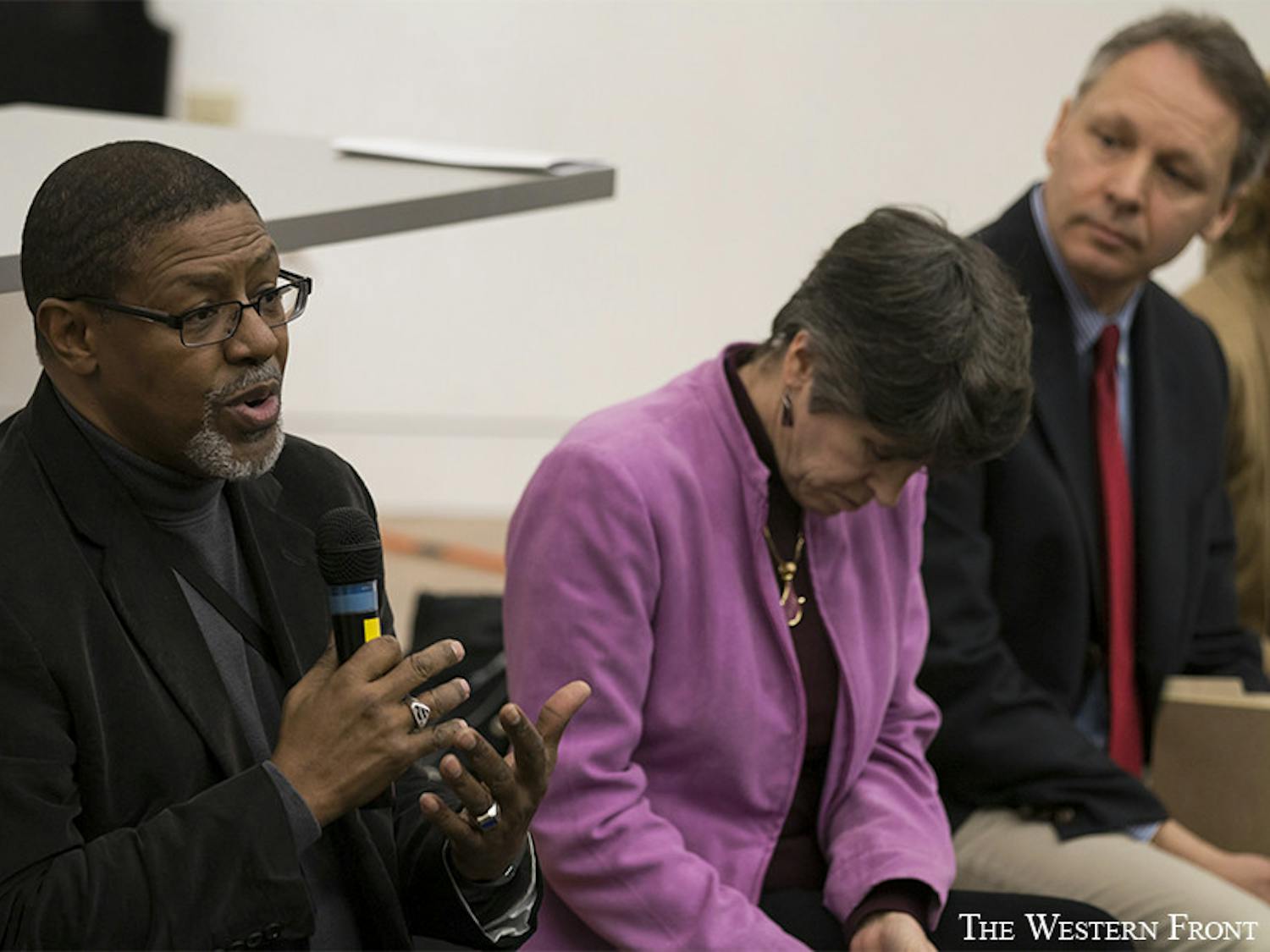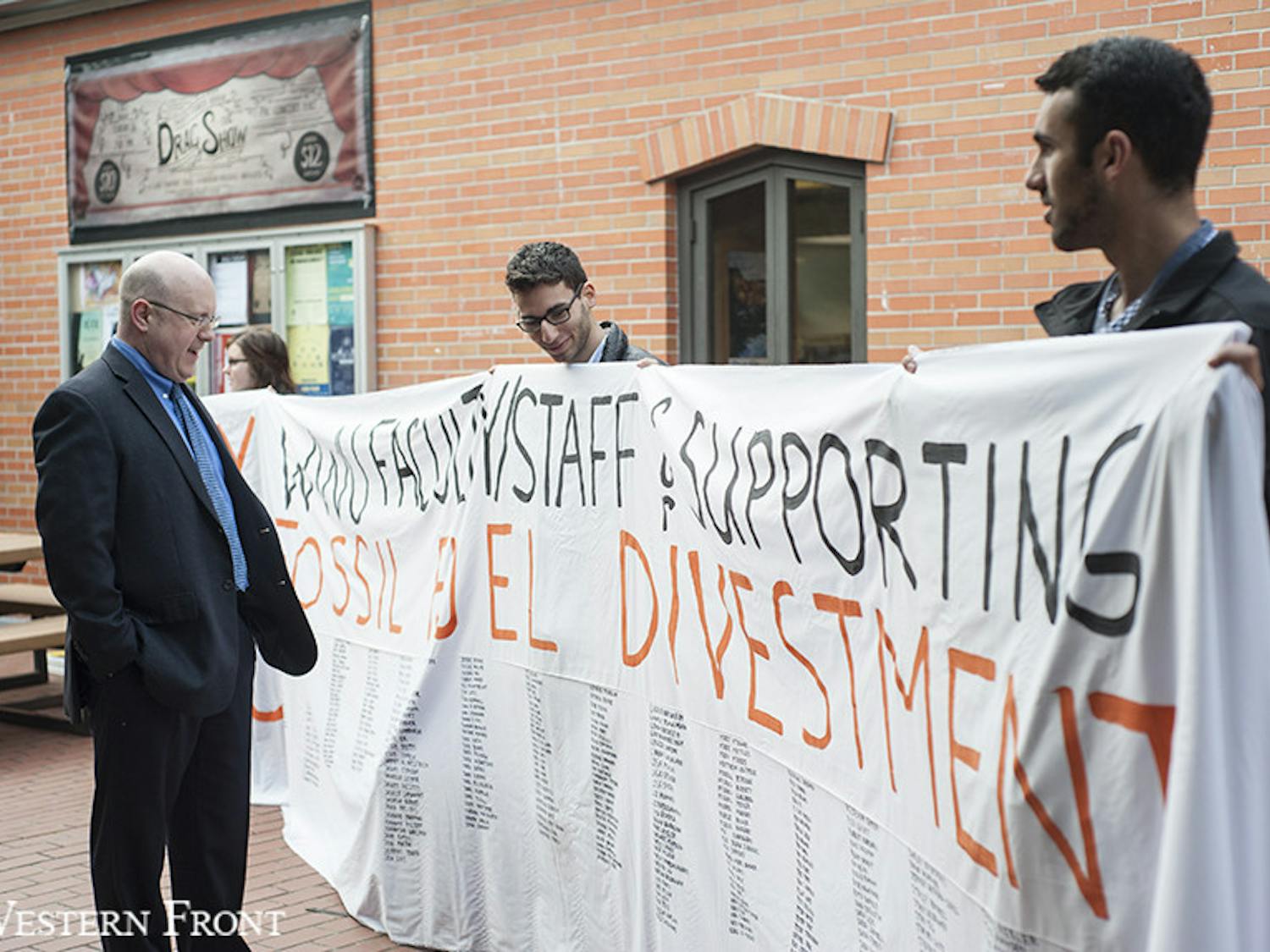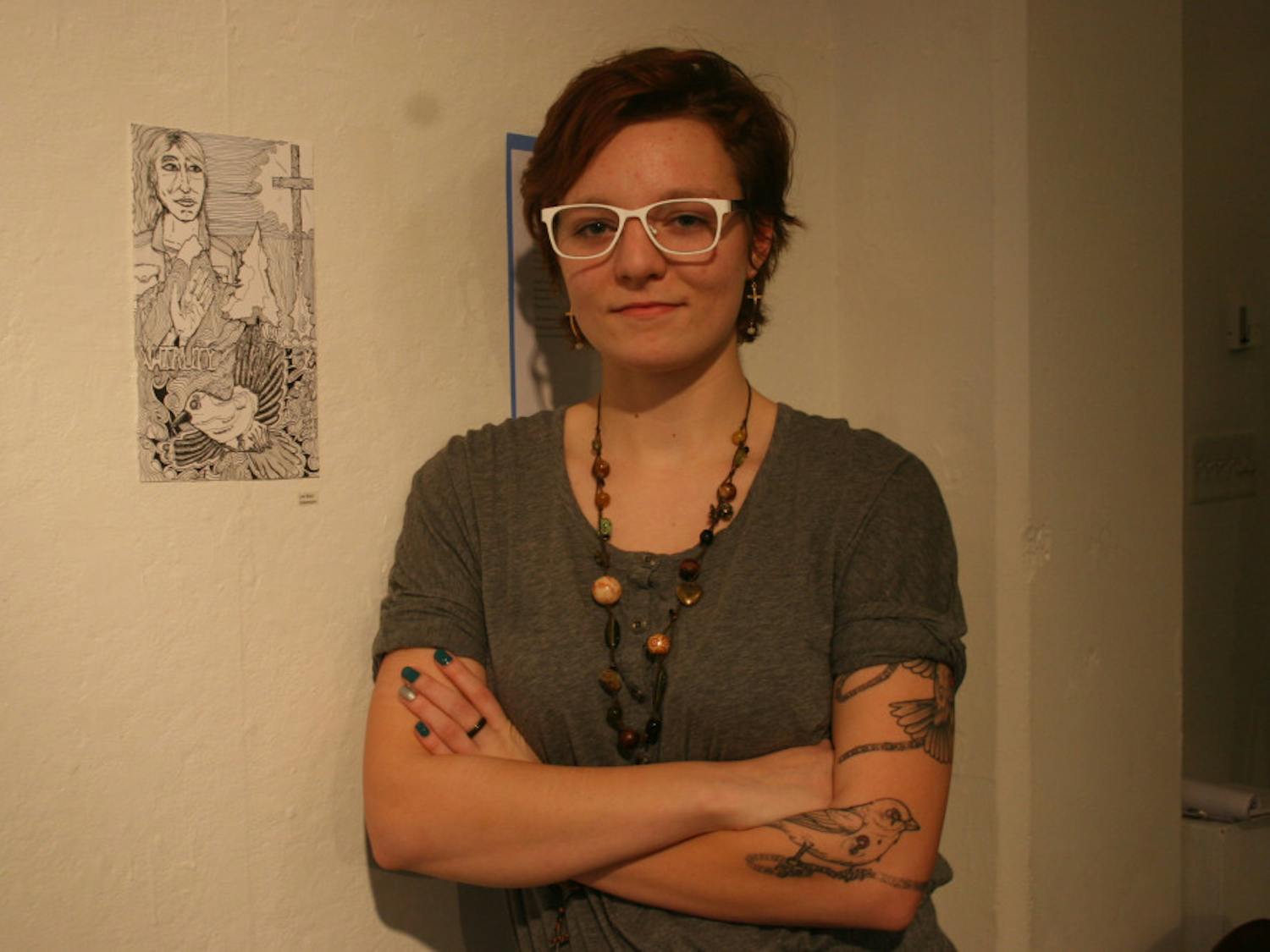News
Edens North residents discuss compensation for hot water failure
By The Front | March 1Two resident directors met with about 15 students in the main lounge of Edens North residence hall to discuss compensation options after they were left without hot water for more than month. A proposed amount of 51 cents per day without hot water added up to about $18 per student, and was then rounded to $20 per student. The outcome is a rounded figure from the utility cost for water during the time the outage occurred, said associate director of business and information systems for University Residences Kurt Willis. The decision was made by the Housing Leadership Team, said Willis. The residents were given the option of adding $20 to their Viking Dollars, a prepaid debit amount loaded onto Western ID cards to be used at any dining location on campus or pooling it together to throw a larger event as a community. Some ideas included hosting a guest speaker, concert or catered outdoor movie. Edens North resident Henry Pollet thinks the current proposed outcome of $20 is a joke. “It’s really insulting for all the people who had to live here for over a month and were told to go down to the gym...to shower everyday,” Pollet said. Residence director Richard Henderson and assistant director of residence life Scott Leppla hosted the meeting on Friday, Feb. 26. But after 30 years at Western, Willis said this isn’t the first time something like this has happened. “A flood here, smoke damage there, electrical issue there, certainly that happens when you’ve got so many spaces like we do it’s inevitable that something’s going to happen,” Willis said. However, Willis said that as a part of the housing contract, the university doesn’t reduce or waive rent for any sort of emergency break or necessary repair. The 2015-16 housing agreement stipulates that, “The University shall furnish heat, electricity, water and sewer services,” but also states that in the event of a temporary interruption of service, “The student shall claim no reduction or waiver of fees or other compensation, nor shall this agreement or any of its obligations be affected or reduced.” With aging buildings and parts within university housing, instances like these will likely become more common in the future, however, Willis says that not all failures are the same. “Assessing the condition of those key elements is important,” Willis said. Willis said that a recent comprehensive facilities condition assessment of each building on campus identified items that needed to be fixed or replaced. For example, a heat exchanger unit similar to the one that broke in Edens North is projected to be rebuilt this summer in Nash Hall. On Jan. 15 the head to a heat exchanger responsible for providing hot water to the residents in Edens North failed, leaving all 106 residents without hot water for a month and subject to shower in nearby residence halls or the Wade King Student Recreation Center. After a temporary fix, a custom-built piece was installed on Friday Feb. 19. Resident Ian Stewart said he takes short showers and didn’t have a problem with the cold water. “A cold shower is not optimal but I don’t really care that much,” Stewart said. Stewart also said he was interested in compensation of $20 Viking Dollar credit if it becomes available. Residents Zoe Castro and Morgan Ikemiya are not happy with the outcome. “[$20] is not anything at all to having almost two months with no hot water in the winter,” Castro said. “I think that the amount we’re paying to live in [Edens North]--$20--that’s not anything compared to what we’re paying,” added Ikemiya. Director of University Residences Leonard Jones also said there is nothing in Western’s on-campus housing contract that mentions reimbursing students for any inconvenience due to accident. “Anything that we do that’s outside of the housing contract is goodwill,” Jones said. “There’s nothing that’s a requirement.” Due to a low turnout, the group of residents didn’t make a decision on Friday and decided to gather some more opinions from fellow residents and host another meeting next Thursday, March 3, in the Edens North main lounge.
When the screen goes dark: finding a place for electronic waste
By The Front | March 1The first thing one sees when walking into the Equipment Inventory warehouse on Western's campus are rows upon rows of stacked boxes. Pianos are scattered around the warehouse floor, mixed in with an innumerable amount of office chairs and old desks. In a corner sit waist-high bundles of old computers, shelves full of monitors and a tube radio from the 1950s. This odd collection of items has been put aside as surplus, equipment the university no longer requires, most of which is destined to become e-waste. E-waste, or waste of electrical and electronic equipment, is a term used to cover all tech equipment that has been discarded by the owner without the intent of re-use, according to the United Nations University article, “The Global E-Waste Monitor.” Or as Equipment Inventory supervisor Jack Herring simply puts it, “If it doesn't power up, its e-waste. If it plugs into a wall, it's 'e.' ” Herring, who has been working at Western for the past 25 years, said there hasn't been a significant change in the way Western manages e-waste in the past 10 years, although there has been steady increase in the amount of e-waste processed by the university. In 2007, the university disposed of 26 thousand pounds of e-waste, which rose to about 52 thousand in 2015. A United Nations University study found that 41.8 million metric tons of e-waste, more than 92 billion pounds, was generated worldwide in 2014. In the past 20 years, countries around the world have been establishing official take-back systems designed to help collect e-waste and process it in professional treatment facilities. Despite these efforts, only about one-seventh of the e-waste produced globally makes it into these take-back systems. In the U.S., only 12 percent of e-waste is collected by take-back systems, compared to 40 percent in the European Union. However, the U.S. has improved its e-waste management in the last 15 years. According to an estimate by the EPA, 90 percent of e-waste was trashed in 2000, which had dropped to 60 percent in 2013. Trashed e-waste is typically sent to landfills or incinerators, causing the toxic chemicals they contain, such as lead or mercury, to be released into the air and water. “10 years ago, the state didn't call it e-waste,” said Herring. “Things have just evolved as the industry has changed.” There are three departments on campus that manage e-waste produced by the university: Equipment Inventory, ATUS and Environmental Health and Safety (EHS). The e-waste collection process begins when a machine breaks down or Western purchases new technology. Anything that's older than 12 years is sent to surplus, said Desktop Support Manager George Liu while motioning to aged printers undergoing repair. Liu oversees a team that troubleshoots hardware and software on the university's tech equipment in an effort to reduce Western's e-waste output. Liu and his eight other desktop support specialists can remotely access computers on campus to fix software problems from their office in Haggard Hall. With hardware, these days, its more of warranty repairs, Li said. With the warranty repair, if equipment breaks down, it gets sent back to the manufacturer. For out of warranty repairs, the parts are mostly likely to go to e-waste barrels, he said. Herring attributed the lack of out-of-warranty repairs to the shift toward low-cost computer manufacturing. “The computer industry has basically built in obsolescence on their machines and the price has come down such that it doesn't make sense to put the labor into rebuilding computers,” he said. Equipment that can't be repaired or has an expired warranty then goes through the Equipment Inventory's surplus process. Items that can still function are auctioned off in an online marketplace similar to eBay Inc. Electronic material that cannot be re-used or sold by the university is then sectioned off as e-waste. The EHS then decides the best method for disposing of this waste. EHS director Sue Sullivan said that the most important factor in e-waste disposal is making sure the end facility processes the waste in an environmentally sound way. “We want to make sure we are complying with the law, that were managing our waste properly and that we're also minimizing our liability,” Sullivan said. While the collection process for e-waste at Western has not changed, the EHS has modified the disposal process. “There was a time when EHS was taking some of those pieces of equipment and dismantling; taking circuit boards, putting them in a drum, separating out monitors with cathode ray tubes, taking the plastic housing from the [computer] towers and putting them in a separate bin. Then it would all go through an electronic waste vendor,” Sullivan said. Western used to recycle its e-waste through the Seattle recycling center Total Reclaim Inc., which previously held a state contract for e-waste, certifying that facility properly disposed of the waste. However for the past five years, Western has been utilizing Apple's Electronic Waste Promotion, Sullivan said. For this service, Apple pays for the shipping, handling and reclamation of e-waste. This service is offered to K-12 schools and universities. “We went through a process where we looked at the end facility where our e-waste is being sent, and determined that it adhered to our standards,” Sullivan said. “If that promotion were to end, we know that there are other options here locally, where we can do that, where there is a cost to it.”
Proposal for new multicultural center sparks campus conversation
By The Front and Alyssa Evans | February 29











